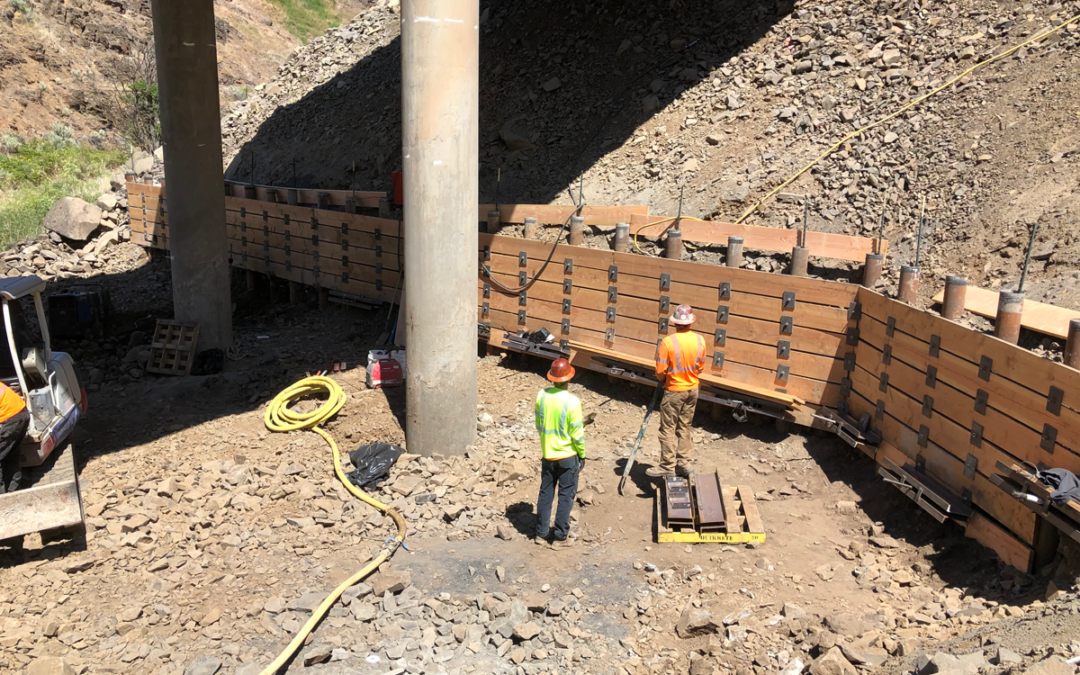While many foundations are meant to last forever, temporary foundations are critically important during the building process. There are many instances in which a sort of temporary foundation is necessary to ensure that soil stays stable during construction. These temporary foundations are known as shoring.
Generally, you can think of shoring a sort of slope stabilization. When you make a vertical cut into soil, it is usually not strong enough to stay vertical. You have likely realized this if you have ever dug a hole in your yard. As the hole gets bigger, the sides of the hole start to collapse in on themselves. The soil is not stable enough to hold itself up. When builders encounter this problem during construction, they need to install a foundation to make sure the ground stays stable.
Designing temporary shoring is part and parcel of our work at Froelich Engineers. We especially rely on a form of temporary shoring – vertical shoring – on construction sites that are constrained by property lines, buildings, or the potential to disturb nearby infrastructure.
We often use the solider pile method in vertical shoring, where a series of holes is drilled into the ground, set 4 to 6 feet apart from each other. Then, I-beams are dropped into these holes and anchored with concrete. Finally, the gaps between the I-beams are filled with some sort of lagging – wood boards, steel plates, or rebar covered with sprayed concrete (also known as shotcrete). The lagging material acts as piles, which allow the crew to dig down and then continue work in a cut without having the vertical cuts collapsing in on themselves. Depending on conditions, these vertical elements are paired with tiebacks, a horizontal version of a micropile to reinforce the shoring and stabilize nearby building footings.
It’s important to note that the approach to shoring on a site is its own design problem, independent of the engineering required of the finished building. Multiple factors influence shoring design, from the proximity of nearby foundations and footings, to soil conditions and the presence of ground water on the site. If your project involves complex site conditions, our engineers are always happy to consult with building owners and contractors to solve excavation issues.

